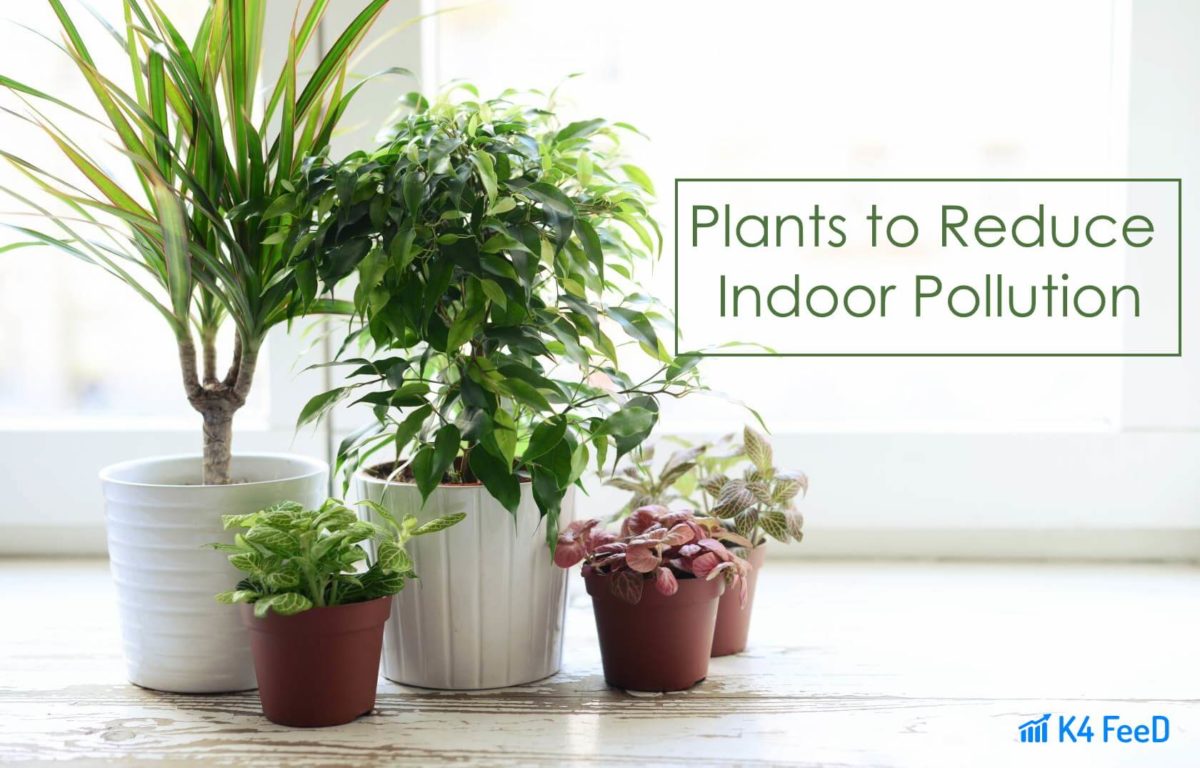Individuals are progressively worried about the nature of air in the indoor spaces in which they invest noteworthy measures of energy. Regardless of whether it be at school, work, or at home, people are getting increasingly aware of the different types of air contamination and steps that can take to limit it and remediate any current issues. Indoor air contamination includes open air quality, atmosphere, geography, and synthetic substances present in indoor spaces. This contamination can add to issues like asthma and other breathing issues and may even add to long haul medical issues.
Here is a list of plants which are most effective in purifying the indoor air and can be used to decorate the indoor spaces as well.
20 Plants to Reduce Indoor Pollution
Areca Palm
Areca palms sift through unforgiving synthetic compounds including CH3)2CO, xylene and toluene, which collect from items, for example, nail polish, cleansers, wooden furnishings, poor ventilation, gas, beautifying agents and so forth. This plant is often used to decorate hallway and other parts of the house. Also known by its scientific name Chrysalidocarpus lutescens is really safe for kids and pets and gives more pure air as it grows.
Philodendron
Indoor as well as a garden plant, Philodendron, is easy to maintain but toxic as well. The philodendron plant decontaminates air by expelling formaldehyde, which will in general happen from building materials and home goods. Known by its scientific name, Philodendron Hederaceum, is one of the most effective plants in purifying the air.
Rubber Plant
Rubber plant improves indoor air as their enormous surface leaves retain harmful synthetic concoctions at that point separate them. The plant has appeared to assimilate carbon dioxide and convert it into breathable oxygen. Also known by its scientific name Ficus Elastica, is a perfect air purifying plant for offices and residential spaces as well.
Peace Lily
Peace lilies have appeared to improve indoor air quality by up to 60%. The plant lessens levels of form spores through engrossing them as nourishment. The plant can be helpful is considered as an expert in cleaning ammonia and other toxic elements. Known by its scientific name, Spathyphyllum, can survive for long time without being watered and fertilized.
Dracaena
Dracaena plants are considered to be one of the best air purifiers. The plant expels formaldehyde, benzene, trichloroethylene and carbon dioxide – which are all connected to medical issues. Dracaena plants likewise will in general increment the stickiness of a room which thus assists with controlling respiratory issues. Known by its scientific name, Dracaena Reflexa, are very low maintenance, fast growing houseplant which can survive for long without direct sunlight.
Snake Plant
The Snake Plant is incredibly successful in its capacity to retain harmful synthetic substances like carbon monoxide, benzene, formaldehyde and other impurities and synthetics found in indoor air. The plant likewise delivers oxygen, retains CO2 in the night and has demonstrated to be advantageous for airborne sensitivities. Also known by its scientific name, Sansevieria Trifasciata, is also very helpful and effective in treating headaches, eye irritation and respiratory issues.
Boston Fern
Nearby being a natural air purifier, the Boston Fern additionally re-establishes normal dampness to the air. This plant doesn’t require much fertilizers and is used to decorate corners of rooms of the house by individuals. Known by its scientific name Nephrolepis Exaltata, does requires a lot of water but would definitely increase the amount of pure air in the house.
Aloe Vera
Aloe Vera plant has been utilized for ages by individuals with burns from the sun or skin conditions. The gel inside Aloe Vera leaves are a characteristic enemy of bacteria and are pressed brimming with nutrients. Moreover, the plant goes about as a characteristic air purifier and decreases poisonous synthetic substances including formaldehyde and benzene. Known by its scientific name, Aloe Barbadensis is used as an indoor air quality checker and is used in various beverages is found in almost every home.
English Ivy
English Ivy can invigorate fluid organs and contains expectorant properties, which can help individuals with breathing problems and issues. The leaves are really utilized as medication to lessen fatigue and allergies. The plant is additionally utilized restoratively to improve lung health, liver issue and other issues. Famously known by its scientific name Hedera Helix, doesn’t require much water, easy to trim and is very effective in removing toxic elements from the air and making it pure.
Spider plant
The Spider Plant is a cancer prevention agent as it successfully fights harmful synthetic compounds alkali, benzene, formaldehyde and xylene. The plant is very simple to grow and rapidly improves air quality. A report found that within only two days, the plant expelled up to 90% of the poisons found in indoor air and this makes it better than other plants. Also known by its scientific name, Chlorophytum Comosum, is a non-toxic plant and is believed to reduce stress.
Weeping Fig
Tree like indoor plant is very popular in Asian countries and is one of the best air purifying plant. This plant needs a lot of water to survive and is believed to drop leaves of it. Also known by its scientific name, Ficus Benjamina, does require a lot of fertilizers too but is often used to decorate part of homes as well.
Gerbera Daisy
One of the most beautiful plants, Gerbera Daisy is an excellent air purifying plant too. Due to availability of this plant in many colors, this is used to decorate houses as well. This plant requires maintenance and care and requires a lot of water, fertilizers and regular sunlight too. Also goes by its scientific name, Gerbera Jamesonii, this plant have a life of 2-3 years only but is really attractive and effective at cleaning the air.
Chinese Evergreen
A simple yet elegant looking indoor plant, Chinese Evergreen, is one of the most effective air purifying plants for indoor. Chinese Evergreen is available in lot of varieties and is toxic. Also know by its scientific name, Aglaonema, is easy to care and durable.
Orchids
Considered as high maintenance plants, Orchids, are really beautiful and effective indoor air purifying plants. Also known by its scientific name, Dendrobium, these plants are known for its survival in different difficult weather.
Dwarf date Palm
Known for their long height, these plants can clean the air at a much faster pace. These plants are very effective in removing toxic elements from the air and their growth depends upon the amount of sunlight they get. Also known by its scientific name, Phoenix Roebelenii, also yields red berries.
Flamingo Lily
Elegant and beautiful flower, Flamingo Lily, is an effective air purifying indoor plant. These plants are also used in decoration in auspicious occasions. Also known by its scientific name, Anthurium Andraeanum, is toxic and can cause various disease if not grown properly.
Golden Pothos
Also known as Money Plant, this plant is grown in indoors and outdoors of a house by almost every individual due to its readily availability. Also considered to be an effective air purifying plant, this plant requires a lot of water and care. Known by its scientific name, Epipremnum Aureum, is also considered to be lucky and auspicious.
Lady Palm
Mostly used a plant to decorate the indoors of the house, Lady Palm, also helps in removing the impurities from the air inside the room. Known by their scientific name, Rhapis Excelsa, These plants can be easily grown in a really small pot as well.
Elephant Ears
With an unusual name, Elephant Ears, is an excellent and effective air purifying plant as well. These plants looks like that of an elephant ears and require proper sunlight and water. Also known by its scientific name, Colocasia, these plants may flower when kept outside.
Parlour Palm
An effective and beautiful plant, Parlour Palm, is an expert in removing toxic elements from air such as benzene and trichloroethylene. Known by its scientific name, Chamaedorea Elegans, is easy to maintain and can be grown in a very limited indoor space as well.



